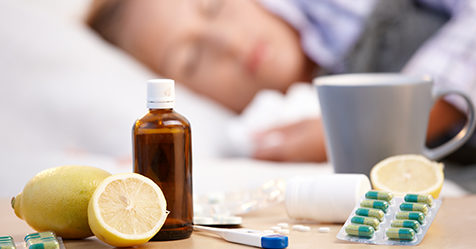New Study Reveals How Germs Thrive on Restroom Surfaces
Lysol Pro Solutions study shows germs can spread to all restroom surfaces after flushing toilet
A new study from Reckitt’s Lysol Pro Solutions in collaboration with the University of Arizona has discovered the ease with which germs can spread throughout a facility’s restroom surfaces after a toilet has been flushed and how effective disinfection is critical to helping break the chain of transmission.
Insights from this study, in addition to analysis of previous Reckitt studies on germ transmission in restrooms, showed that:
- When a toilet is flushed, germs can be ejected from the bowl and potentially transmitted by inhaling them or touching a cross-contaminated surface where they have landed.
- After flushing—or even cleaning the bowl with the toilet brush—disinfection of all bathroom surfaces may be necessary to prevent cross-contamination.
- Germs can remain in the toilet bowl after the initial flush and continue to spread into the air and cross-contaminate surfaces after repeated flushes.
Additionally, the study found closing the toilet lid prior to flushing does not mitigate the risk of germs cross-contaminating other surfaces in the restroom. During cleaning, germs can be transferred from the toilet to sinks and they can colonize cleaning tools such as toilet brushes, where they can survive for up to a week.
Disinfecting surfaces just twice a week can reduce germ transmission in restrooms by up to 90%, according to a study in the American Journal of Infection Control. Disinfection of the toilet seat, sink countertop, and floor are just as important as disinfection of the toilet bowl in preventing the spread of germs.
“A bathroom’s cleanliness can often make or break how people perceive the cleanliness of an entire facility,” said Vanita Srinivasan, Reckitt’s senior manager of global antimicrobial claims strategy and innovation for hygiene, personal and surface care. “But these studies show that even if a bathroom appears visibly clean, it’s often what the human eye can’t see that can impact hygiene levels the most. For example, a toilet lid can be closed before flushing, and the bowl can be cleaned immediately afterwards with a brush, but germs can still spread and cross-contaminate high-touch surfaces in the bathroom after flushing.
“The goal of good bathroom hygiene should therefore be to minimize the potential for germ transmission—and regular surface disinfection, using products that are effective against common bathroom germs such as norovirus, SARS-CoV-2, and adenovirus should be a central component of a facility’s hygiene program, alongside encouraging proper hand hygiene.”


